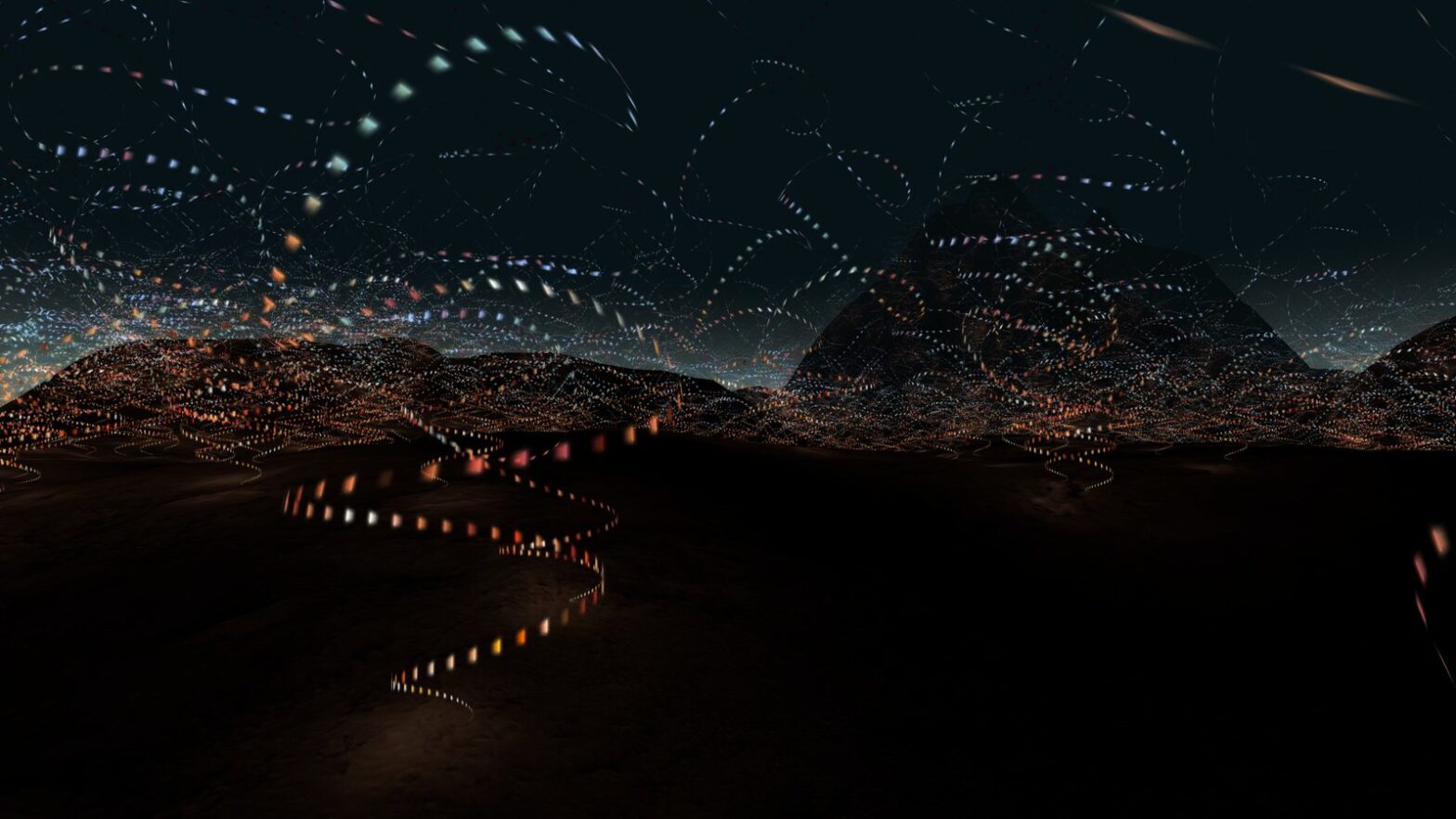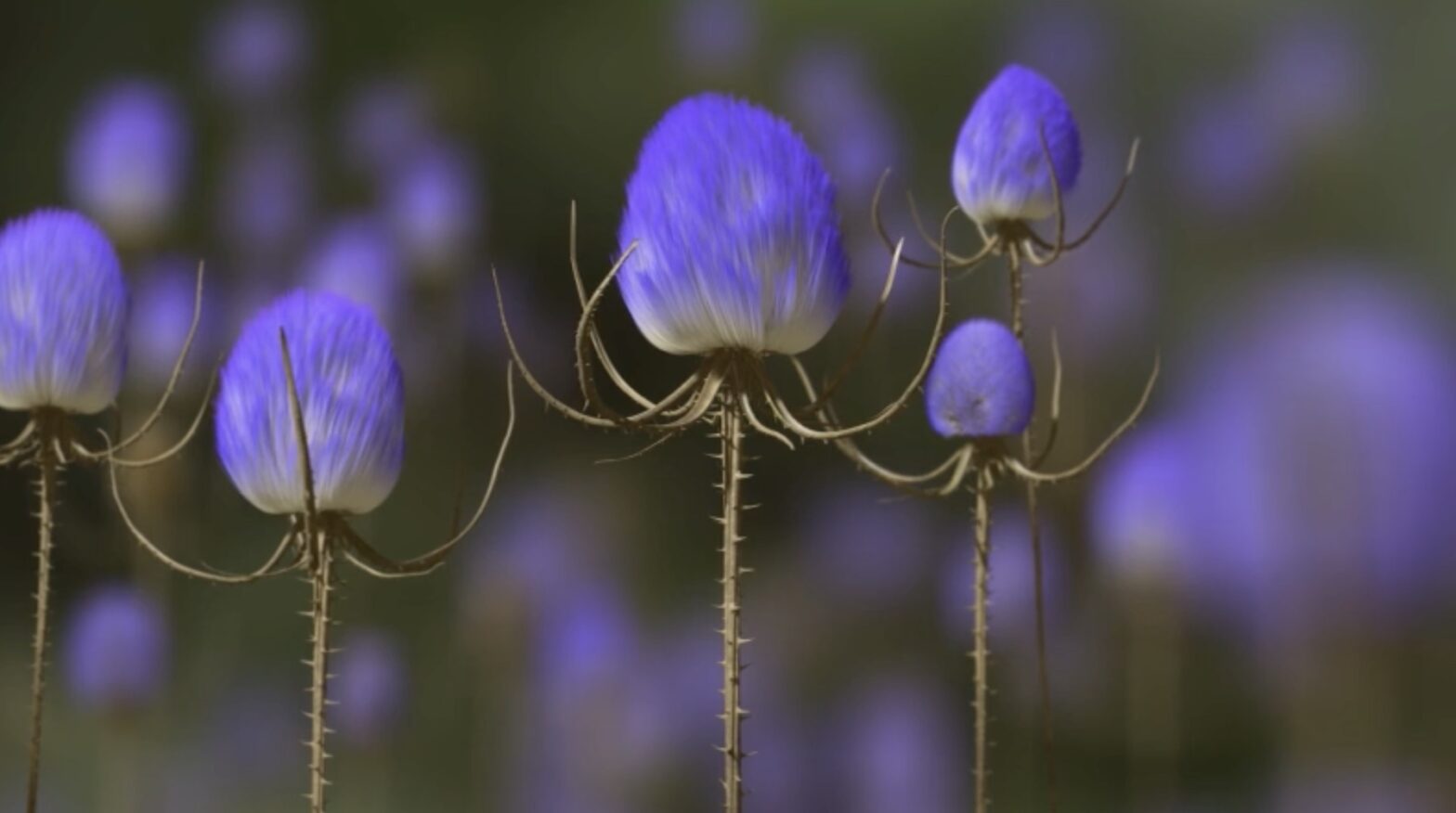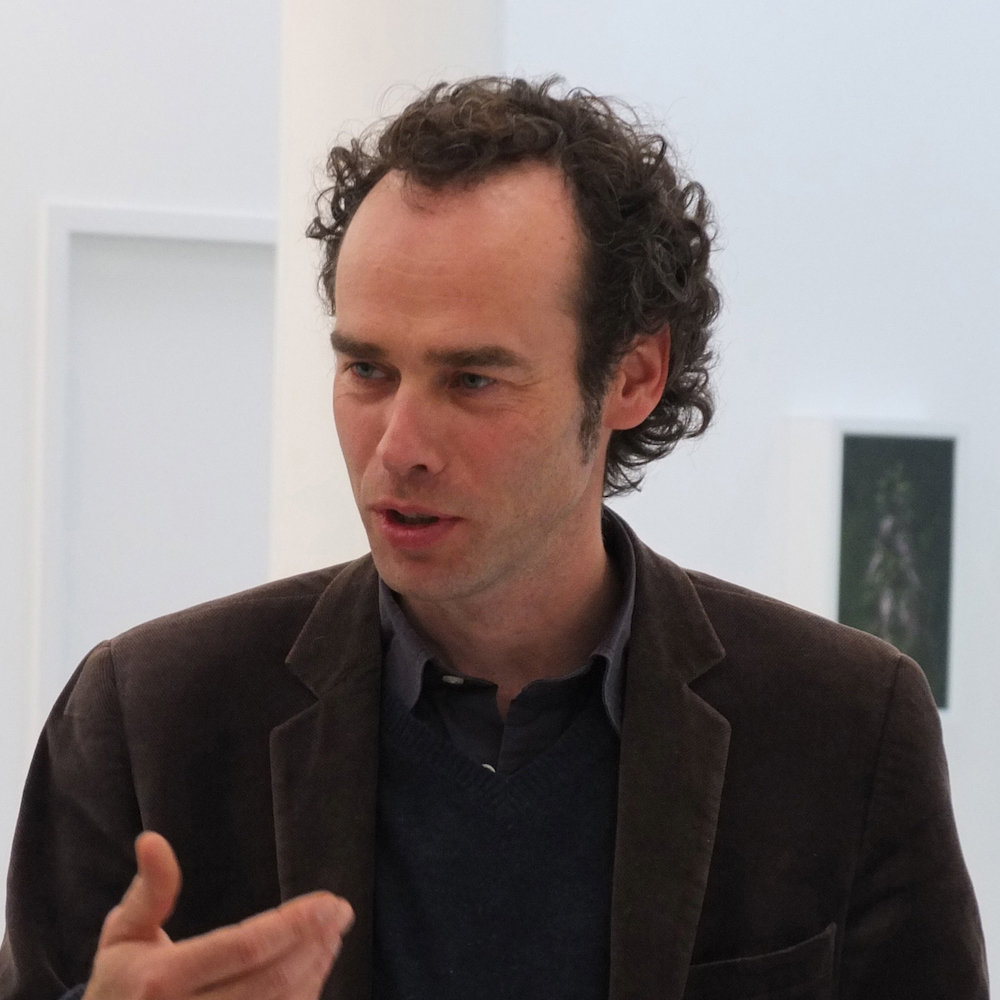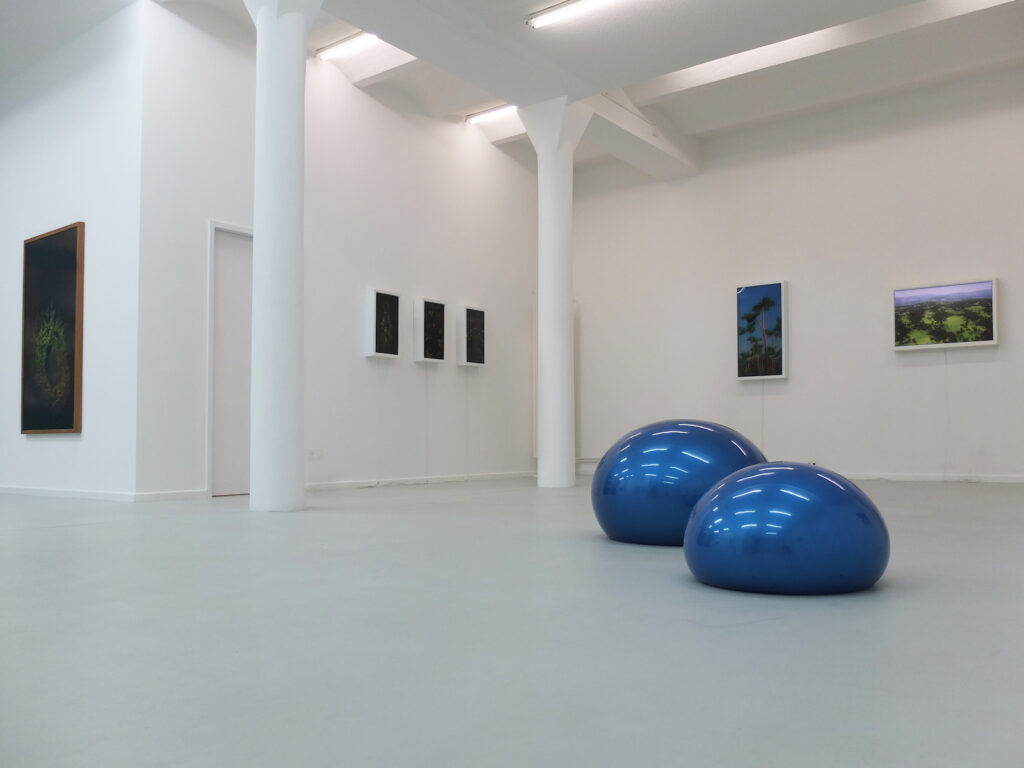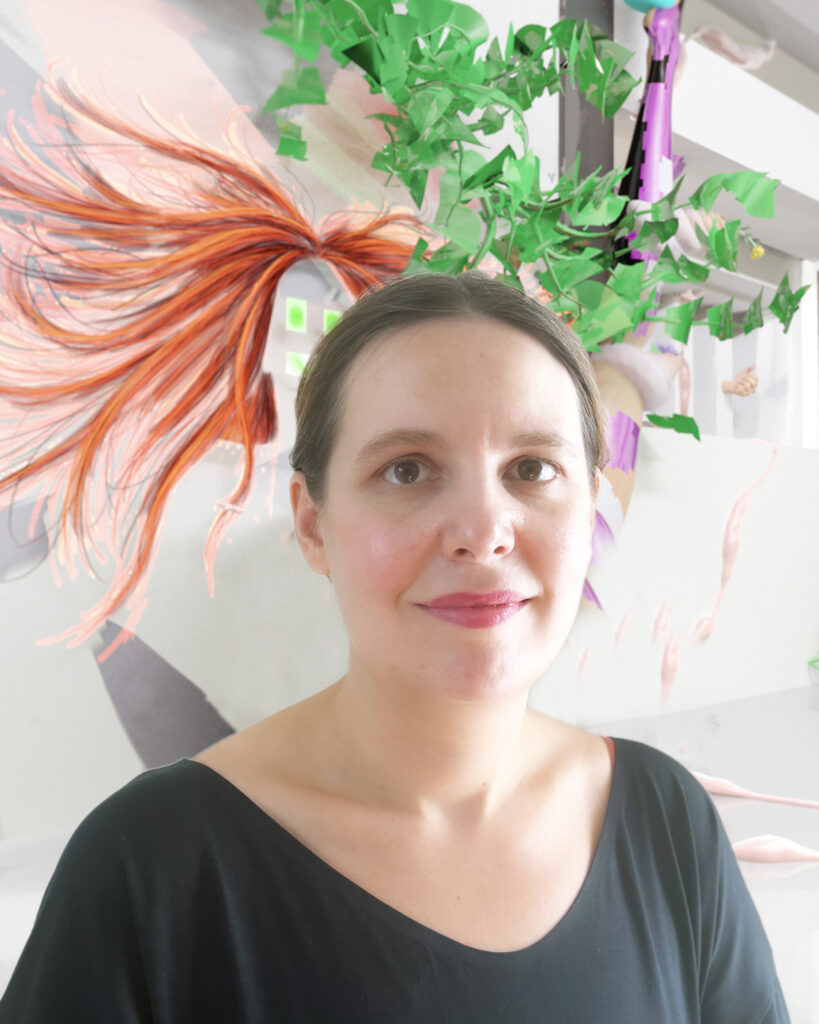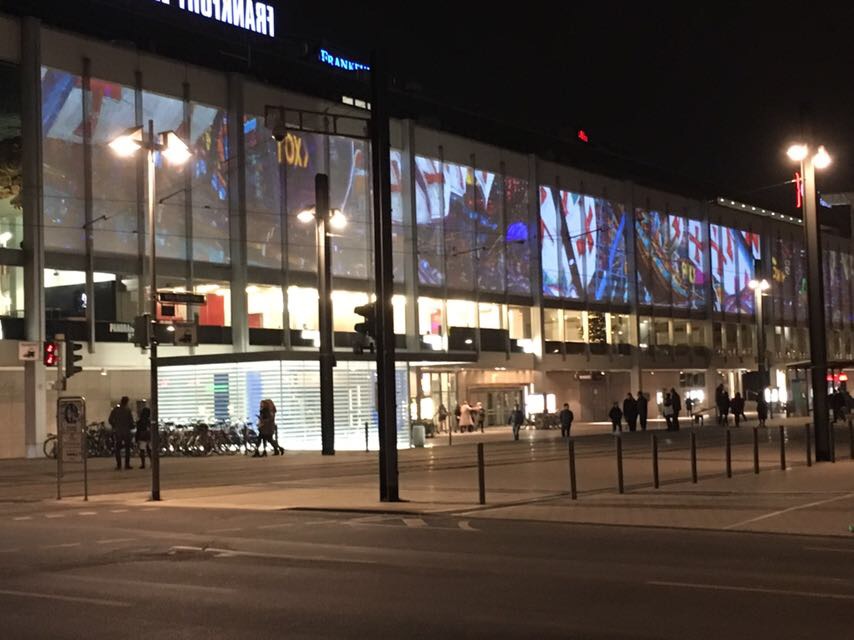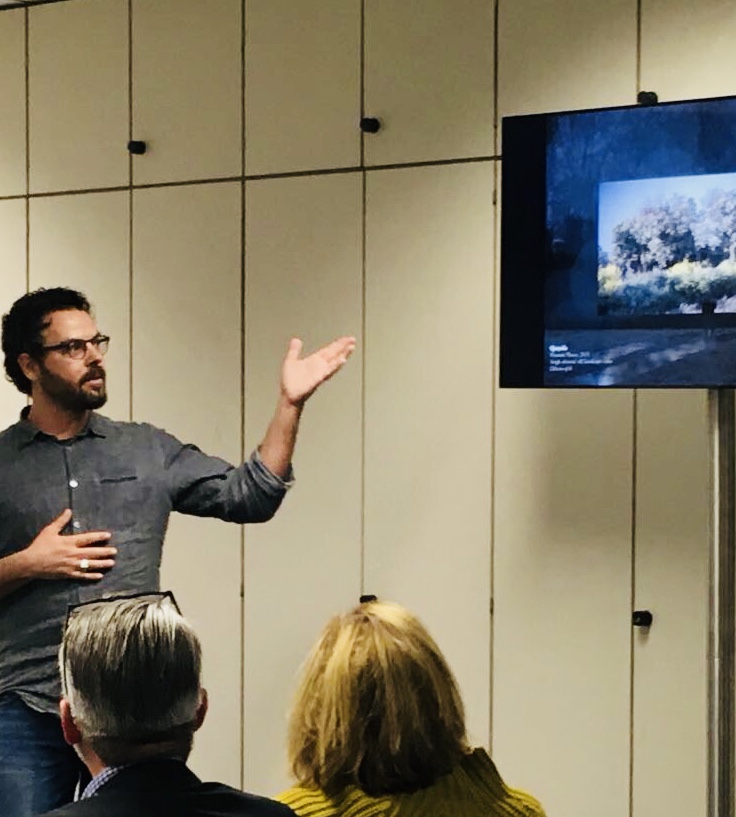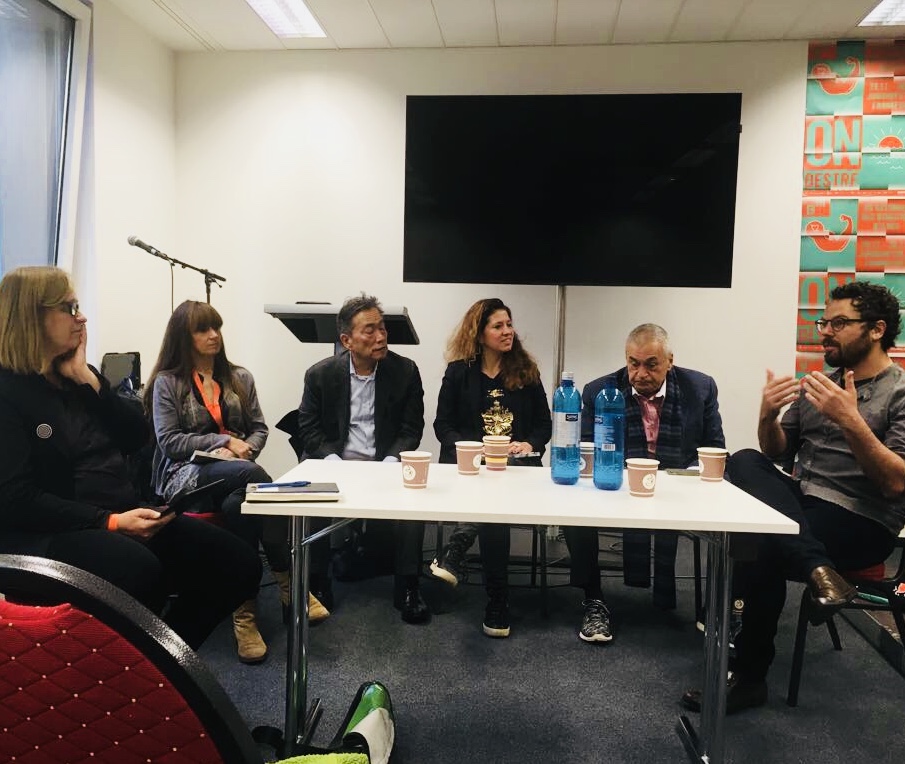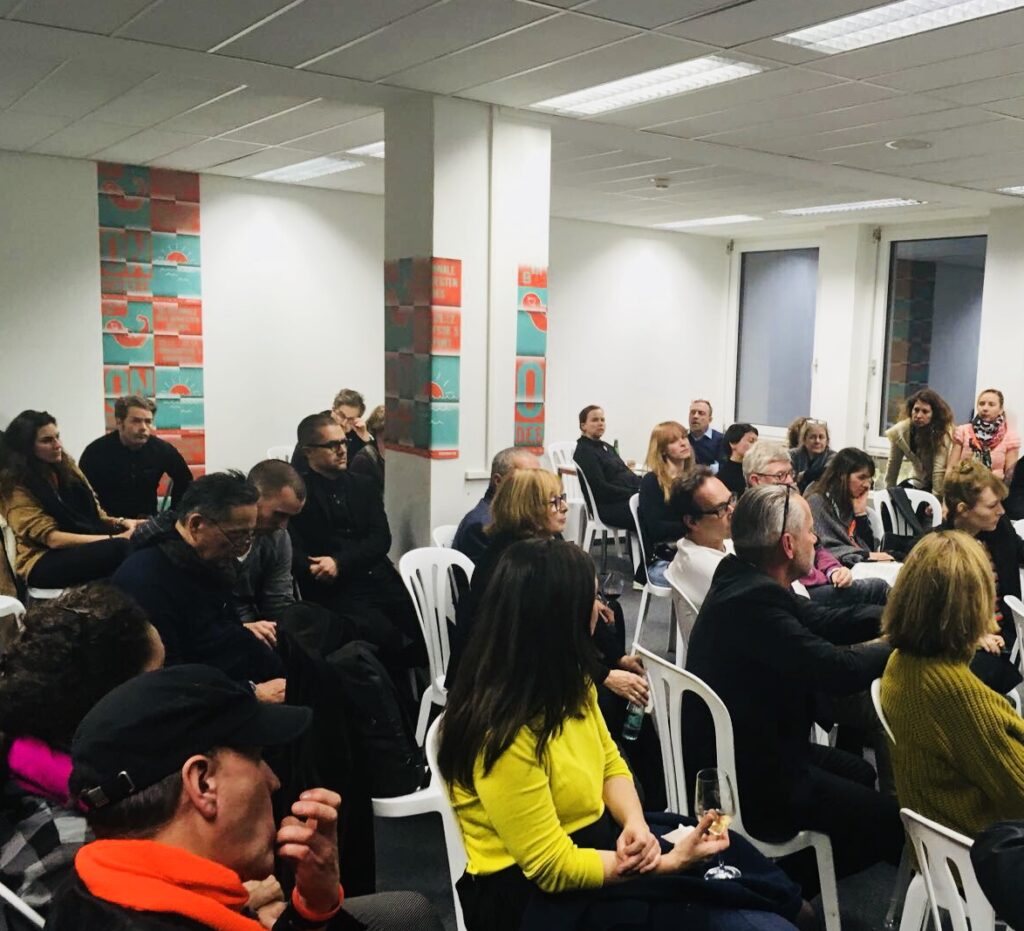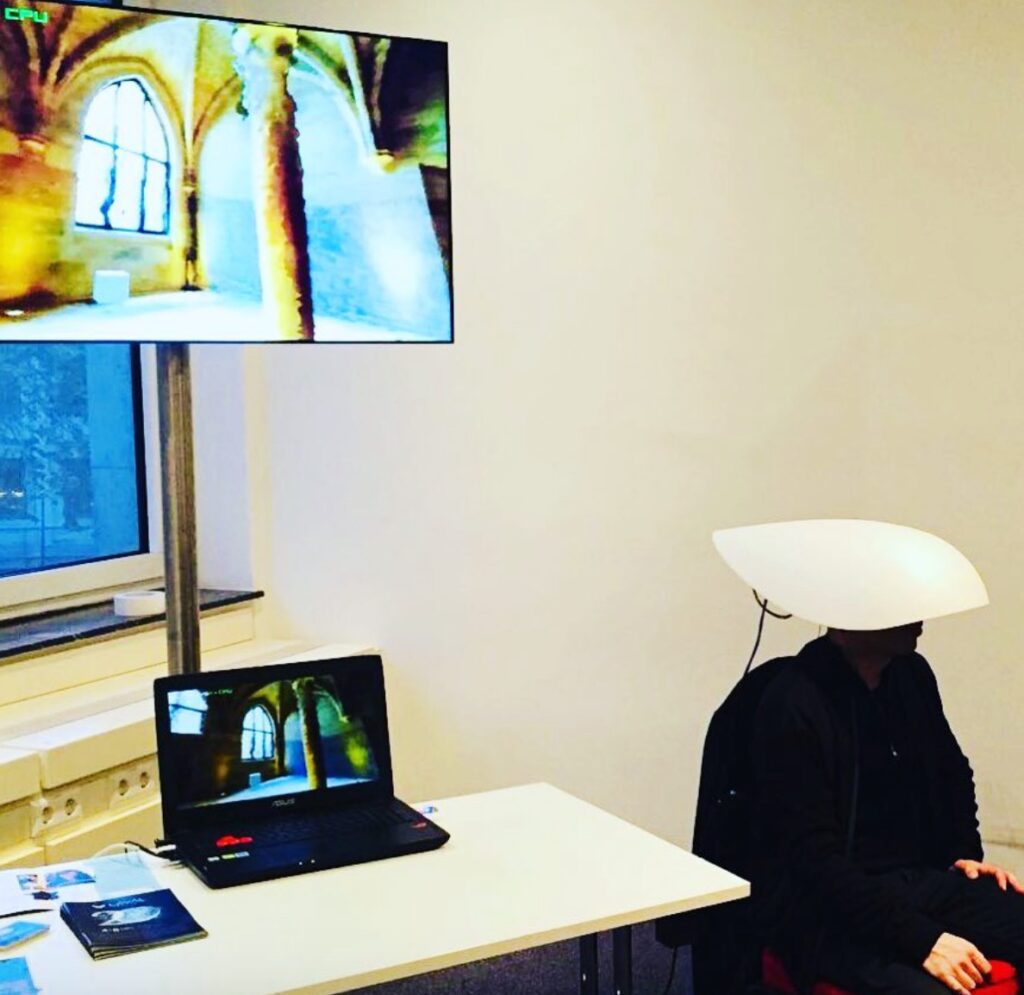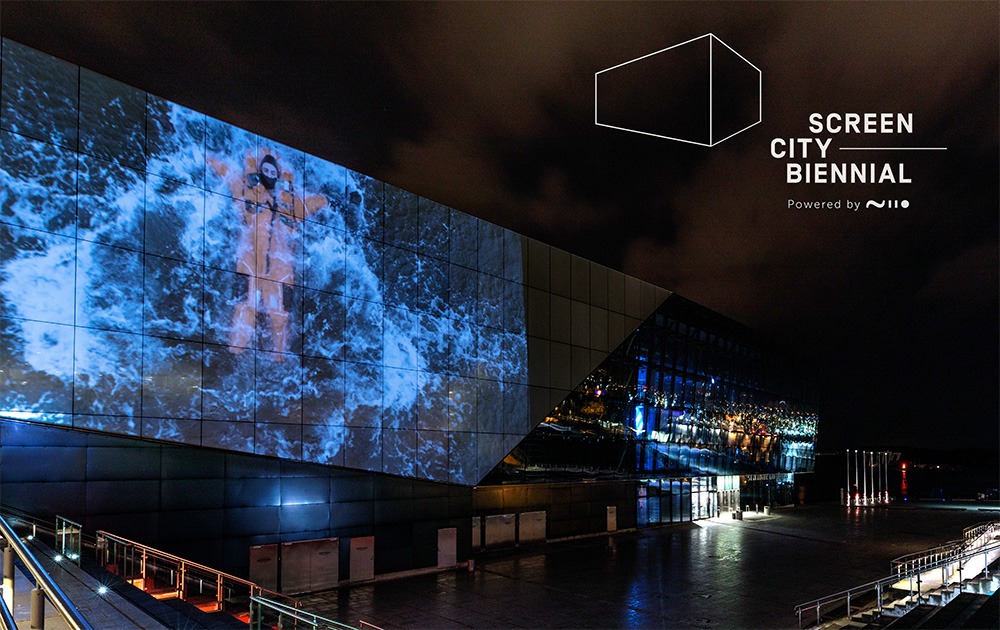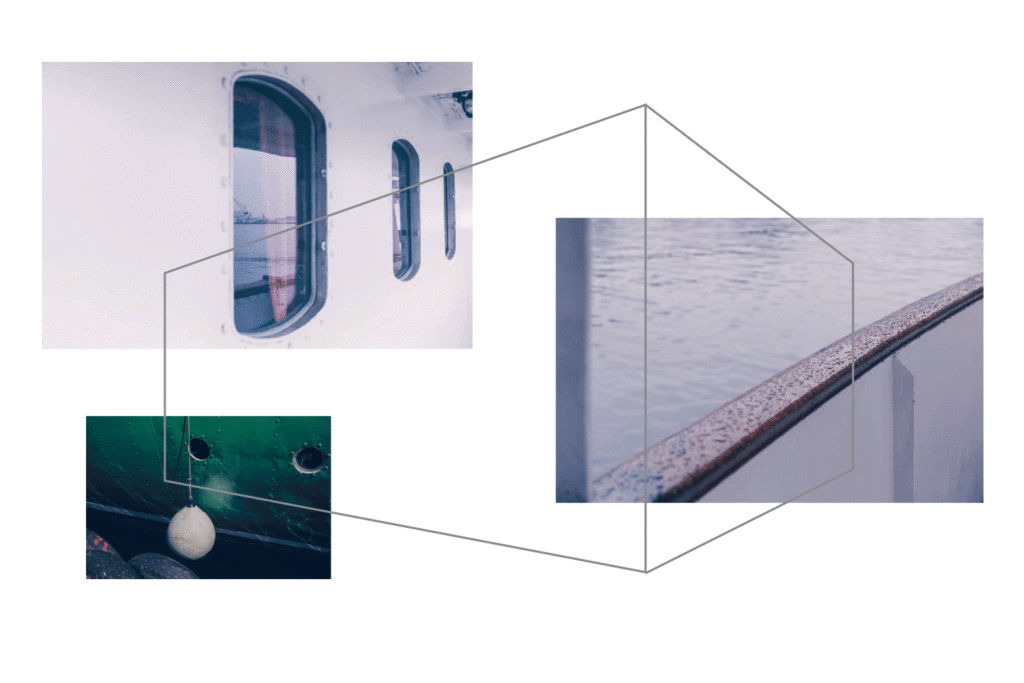Pau Waelder

British artists Vicky Isley and Paul Smith work collaboratively as boredomresearch since the late 1990s, creating interactive and generative artworks, animations, and films inspired by natural environments and living systems. Since 2014, they have collaborated with scientists in the making of their projects about the diversity of natural systems, and the health of both our planet and our own bodies. Their work has been exhibited worldwide, in art and science museums, symposia, festivals, and art galleries.
On the occasion of the launch of their solo artcast Still, Life, curated by DAM Projects, the artists spoke about their work and their particular approach to scientific research through artistic creativity.
Explore the beauty of natural systems in boredomresearch’s artcast Still, Life
boredomresearch, Robots In Distress, 2017
Why boredom research? The combination of both words is humorous and intriguing…
Paul Smith: We came up with the name, around 1998-99, as an umbrella term for our collaboration. Initially, we felt it implied playfulness, but also referred to serious research. More recently, it has grown into the idea of exploring the world in one’s own terms, being creative without the pressure to provide a solution to a problem, as scientists are expected to. So boredom is about having the freedom to be interested in something on your own terms.
Vicky Isley: Boredom is also about unpredictability. In our early works, it was very much about what could be driven through computation. And that led to things emerging that were quite unpredictable, which is what you experience in a state of boredom as well. On the other hand, we carry out serious in-depth research to produce these computational artworks, so it is a combination of study and play.
“Early in our career, we read that the time people spend with artworks in the gallery is about 5 to 30 seconds. So we wanted to reverse that paradigm, to have people spend months experiencing our work.”
You both have a background in Fine Arts, where does your interest in biology and natural systems come from?
VI: We’ve both always been inspired by natural systems. We love being immersed in nature. So to us, that’s really an integral part of our work. That’s where our passion comes from.
PS: Very early on, we became very interested in the computer as a tool. We had the opportunity to work with computers during a residency at the Banff Center for the Arts in Canada, back in 2001. We had been focused on human computer interaction, but there we created our first computational artworks that had no human interaction. They recreated beings that interacted with each other.
VI: We also became interested in artworks that were not linear and ran in real time, creating unique experiences for the viewers. Observing a system instead of interacting with a program is like observing nature, and that led us to look around and ask ourselves which are the rules in all these natural systems, why do living creatures behave like they do?
boredomresearch, Biome, 2005
You have often worked with scientists and mentioned “negotiating that space with the scientists.” How would you describe these collaborations and the role that art plays in scientific research?
PS: We started originally working with scientists that were interested in creating models of systems, the first scientist that we worked very closely with was working in the field of epidemiology. We became fascinated with their work because there was a huge similarity between what we were doing as artists and what he was doing as a scientist. We spent a lot of time talking about motivations, methods, ways of doing things, and we found that we had a lot in common. We found it hard to separate the space between scientists and artists, and I suppose to some extent, we’re still exploring that now.
VI: We understood that mathematical models are almost like fictional worlds as well because they are very contained in what they can visualize, which is very similar to an artistic model that creates a fictional system. Still, I would say that all the scientists that we’ve worked with, we’ve had to build up a trust relationship with them, to the point where they feel like they can trust us in their lab, because early on in the collaborations, they can be much more rigid.
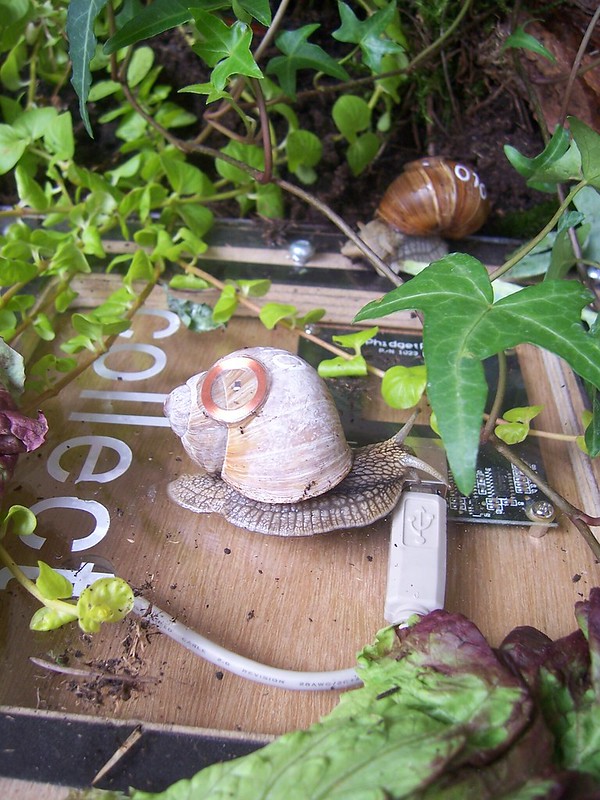
Time, duration, and real time processes are key to your work. How do they shape the conception and development of each artwork? How do you imagine the reaction of viewers will be?
VI: Very early in our career, we read an article about the time people spend with artworks in the gallery. And we found it quite shocking, because it’s mostly like 5 to 30 seconds. So we wanted to reverse that paradigm, which is something we very much did with Real Snail Mail: we took a technology that is about efficiency and speed, and then completely reversed that. So that has been present from a very early stage in our careers.
PS: We consciously wanted to create something in reaction to this idea of a seven second viewing time: we wanted to create something that would last six months. So we had this process where someone would create an entity which then haunted their computer and would develop slowly over a period of time. It worked a little bit like a virus running in the background, which used operating system components such as alert windows to communicate with its “host.” The program would ask for a file that was generated on another host’s computer, and so they would have to look for that person and get the file for the whole process to end. This took around six months.
“For us, it’s really nice to know that the collectors are living with these artworks on a day to day basis, because then they will experience them in the long term. They will be able to see different forms being generated from time to time.”
VI: We were surprised to find that quite a number of users would go through this process and that made us realize that there were people willing to have this kind of extended relationship with the artwork, that goes well beyond what you can experience in an exhibition. This is also one of the reasons why we wanted to create objects that would be owned by people and added to their collections. For instance, Lost Calls of Cloud Mountain Whirligigs (2009-2010) is a generative artwork we created in an edition, and a number of them are already in private collections. For us, it’s really nice to know that the collectors are living with these artworks on a day to day basis, because then they will experience them in the long term. They will be able to see different forms being generated from time to time.
boredomresearch, Lost Calls of Cloud Mountain Whirligigs, 2010
In some of your artworks the subject of the endangerment of biodiversity and the effects of climate change comes up. How do you deal with this subject, and how do you think art can contribute to environmental awareness?
VI: Since we observe natural phenomena, and there are quite worrying things happening in our environment, our work can be quite melancholic. Recently, we’ve been looking at scientific topics like cancer, malaria, and things that perhaps people wouldn’t want to see in an artwork, which is quite interesting. So I think when we do create systems, like Afterglow (2016), for example, which was about malaria, or In Search of Chemozoa (2020), that was about cancer, there is a beauty and poetics to those systems, that draws people into a topic that perhaps they don’t really want to explore. And also, we don’t dictate that you have to know that they’re about. Sometimes people watching the artworks don’t really know that it’s an infection transmission scenario that is playing through, they might just be watching something that is visually more complex to them, or seeing the complexity of that system.
boredomresearch, Infection 626,239,238 Plasmodium Knowlesi, 2016 (video recording of Afterglow)
PS: Another aspect of this is that often scientists are interested in collaborating with artists because they see it as a potential means of communication. But we don’t see our role as being there to offer a way for the scientists to communicate their research to an audience. Our approach is not about communication at all, but rather about experience. An experience in which the viewer is an equal party, not just a non-expert who must be told things in simpler terms. So when we work with scientists we try to create an expression that is closely related to their research, but it is not an illustration of it.
“There is a beauty and poetics to natural systems such as the transmission of malaria or the evolution of cancer, that draws people into a topic that perhaps they don’t want to explore.”
Your work combines installations, generative artworks and also films. How do you work in these different forms of storytelling? You have stated that you are interested in the language of documentary, has that also permeated into your installation and generative work?
VI: Our interest in the language of documentaries first emerged when we produced Afterglow, because that was a commissioned project, and they asked us to produce a generative piece, but also a film version of the artwork as well. That was quite interesting, because the film version took you through the different infection scenarios which you wouldn’t see in the real time version in the gallery. So we had to think differently about the single screening version of that work and we learned a lot through that process. Now the narrative aspect is emerging more and more in our films, particularly in Chemozoa, where we added a godlike voice to bring together the voices of around 25 scientists from different fields.
We’re finding ourselves more out in nature with our work. Participating in artist residencies has allowed us to do field work which has led to our practice becoming more immersed in nature, whereas our early works were purely in front of the screen. I’d say that this has contributed to having a different involvement in what we observe, a kind of experience that we can communicate better using the language of documentaries.
“When we work with scientists we try to create an expression that is closely related to their research, but it is not an illustration of it.”
The sounds, or might I say music, in your generative works and films plays an important role, it creates an ambience. You have stated that “the sound comes at the end”, can you elaborate on the role it plays in your creative and production processes?
PS: Actually, in early works like System 1.6 we sampled sounds from the Rocky Mountains and then we thought, what visual being could actually represent this sound? So in that case the order was reversed. In our film work, this is more challenging, because while we keep recording sounds from the environment, these come later on in editing. But in general I’d say that sound in our work has become something that gives things a voice. We usually conceive the visual aspect of our generated creatures before we introduce sounds, but then when we collaborate with scientists, there is sometimes the challenging question of finding sounds that represent the beings and processes we are making visible.
boredomresearch, System 1_6, 2001
VI: In our generative artworks, particularly those we want people to spend a lot of time with, we look for a background sound. And there is a very fine balance to achieve that, because you don’t want it to be annoying, but at the same time you want it to create an ambience, and communicate the idea that the creatures are alive and active. The Whirligigs, for instance, can be quite chirpy, and then they go through periods of silence, so there are different moments in the artwork that are expressed through sound.
PS: Actually, in our generative works we do not create soundscapes, we create a mechanism that produces sounds autonomously, and that becomes a soundscape. But lately we are increasingly taking responsibility for the quality of the sound and integrating a sound design process in the creation of the artworks, even with musical scores, that we develop in collaboration with professional musicians. The themes we are dealing with are also more serious, so there is probably a certain darkness in those sound pieces as well.

